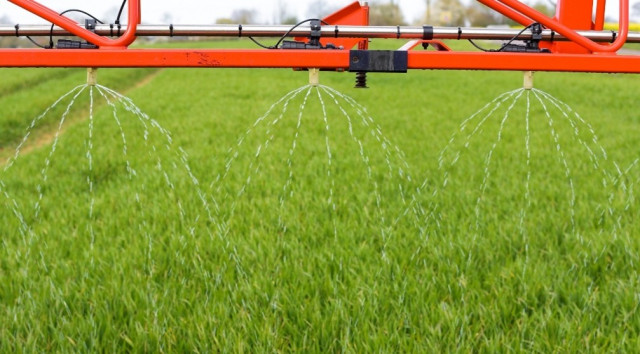Minimising nitrogen losses in your fertiliser programme
Last year, I wrote a blog on how to increase nitrogen use efficiency (NUE) to improve your farm efficiency rating and part of this looked at the impact of nitrogen losses.Following on from this DEFRA recently announced a non-regulatory approach which outlines how to reduce ammonia emissions from any urea-based fertilisers.
Before I summarise the update from DEFRA, I want to stress some advice that I have always given growers. It's very important that you preserve every kg of nitrogen to maximise crop performance. If there are losses to a production system, it's efficiency can be significantly reduced which in turn can impact outputs. As I've said before, if the losses are substantial they can even affect the wider running costs of your farm.
Making every kg of nitrogen count is vital every year, but particularly this season given the higher prices and limited availability for fertiliser. I covered the topic in issue 16 of our AGRONOMY newsletter which you can read here.
Preventing any losses can lead to considerable gains when it comes to yield and quality. By reducing the CO2e/t of production, you could improve your margins and, importantly, reduce any negative impacts on the environment.
DEFRA's non-regulatory approach
| Urea consultation DEFRA has opted for the non-regulatory approach which will come into effect in spring 2024. In it there are four parts:
|
What do we need to consider now?
Regardless of the implementation of the regulations outlined above, volatilisation can still occur and the risk is bigger if the following scenarios occur:
- Dry soils
- Low levels of rainfall
- High pH
- Low crop cover (e.g. spring cereals, maize, sugar beet and potatoes)
- Increased soil temperature
- Increased air temperature.
For solid urea fertiliser, one option would be to switch to using ammonium nitrate such as CF Nitram; this has a very low risk of volatilisation which counters the initial higher purchase cost per kg of nitrogen. Alternatively, there's the option of solid urea that also contains a urease inhibitor, for example Sustain. In trial this product has given the same level of performance as ammonium nitrate but with a significantly reduced risk of volatilisation than untreated urea.
Liquid fertiliser can be up to 50% urea
As of 31st March 2024 you will be required to include a urease inhibitor in your liquid fertiliser programme, such as BASF's Limus ®Clear (unless justified by a FACTS-qualified advisor). Just like solid urea, if liquid fertiliser is applied onto dry, warm soils with a high pH and with minimal rainfall coming, the risk of ammonia volatilisation is much higher. Application timings will of course always play an important role in product performance but Limus® Clear is a sensible way to combat any increased risks and the negative effects on yield and quality associated with volatilistion.
Limus® Clear is a flexible option too as you can add it to the spray tank on the day of application, making it easy to use as and when it's needed.
In on-farm wheat trials, ADAS/BASF found that Limus® Clear resulted in an average yield increase of 0.23t/ha (+£56/ha MOIC) and a decrease in ammonia emissions of up to 98%.
More detail about Limus® Clear and guidance on incorporating it into your liquid fertiliser programme can be found in our YouTube video.
The key to a successful farming business
Reducing losses will help to maximise NUE and improve yields, margins, efficiency and at the same time benefit your wider farmed environment. Using some of tools listed above, depending on your circumstance, could make a notable difference to overall input performance and therefore the success of your crops.
Milling wheat growers should look out for an upcoming blog from national crop nutrition technical manager, Ed Downing. In it, he'll provide advice on how to best use nitrogen to achieve those all-important milling wheat specifications and quality.
If you'd like more advice or guidance with anything covered above, please speak to your local Frontier contact or get in touch with our nutrition team.
As a subscriber, you’ll receive email alerts each time a new blog is published so you can always stay updated with the latest advice and insights from our experts






Comments